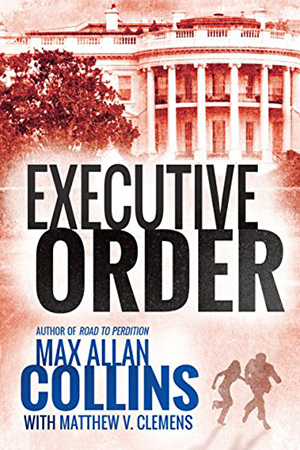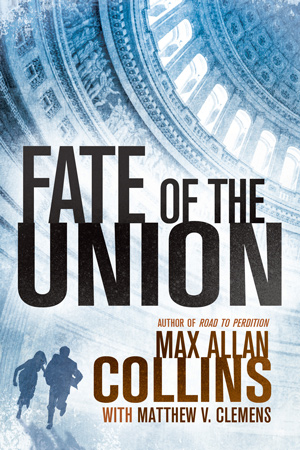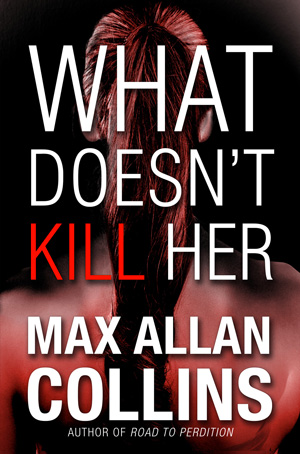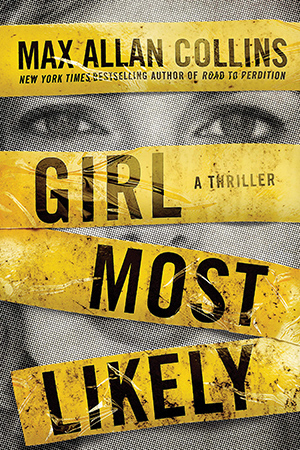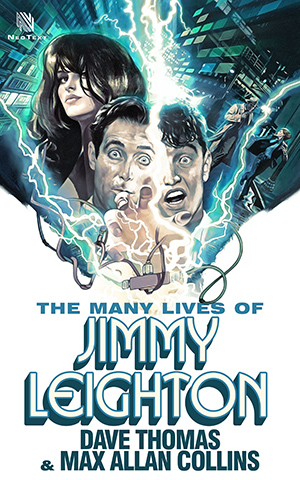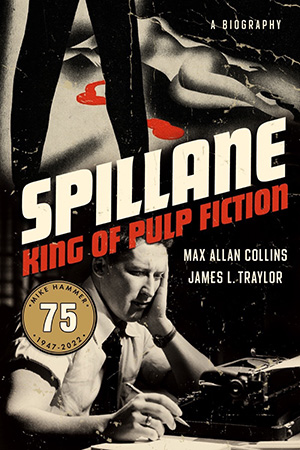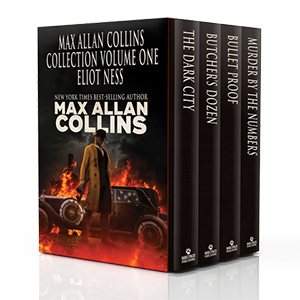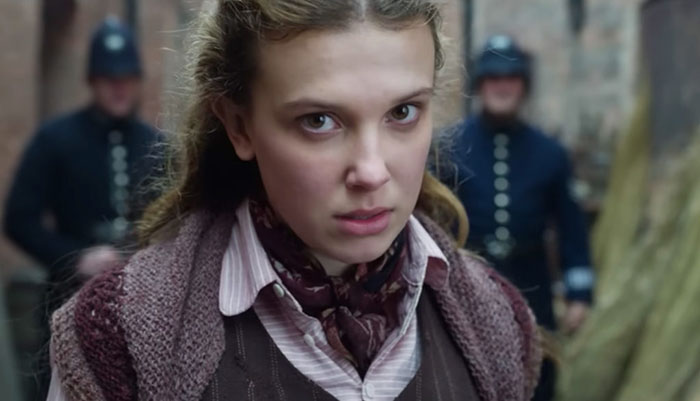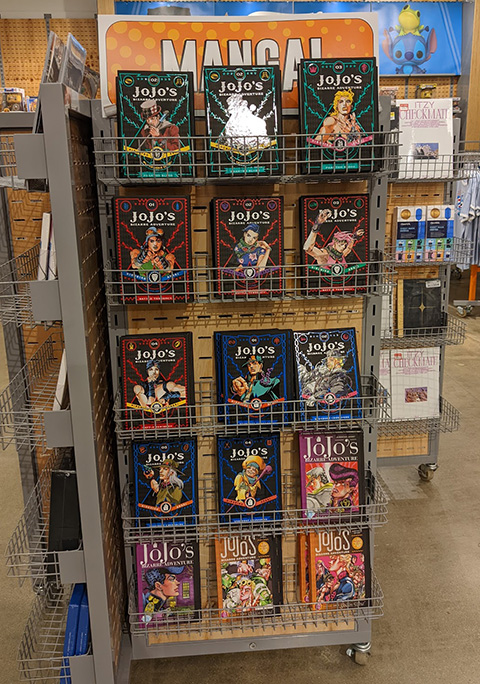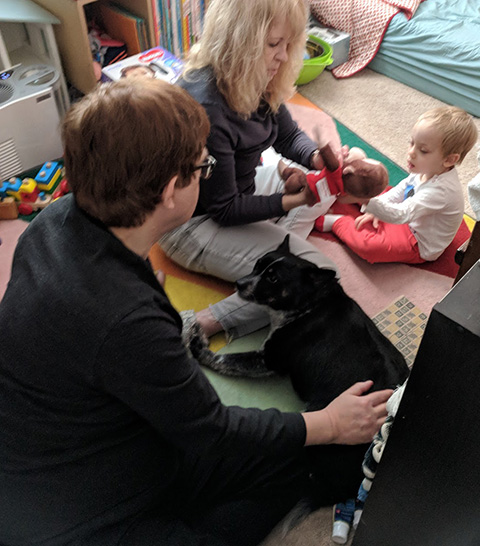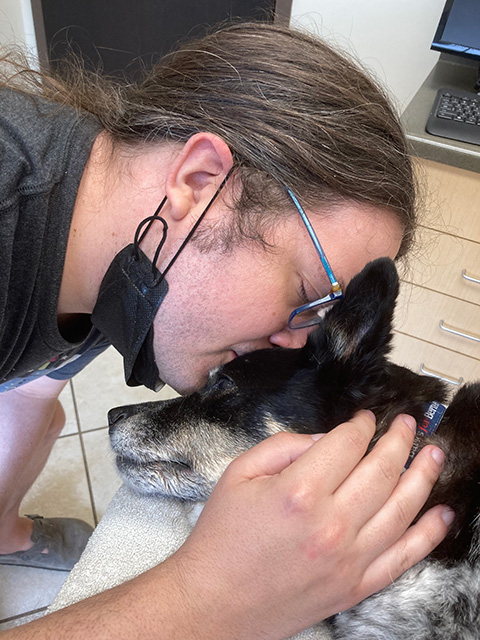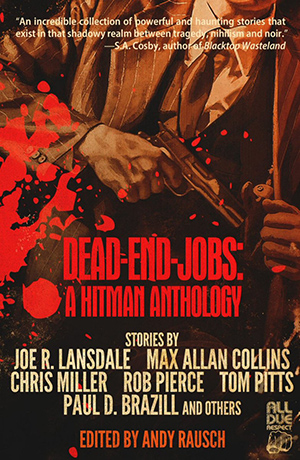For those of you looking for cyber stocking stuffers, or who will need a way to use that Amazon gift cards you’ll be receiving, four of my books are on sale as Kindle titles right now for a meager $1.99 each until the end of 2022. You can avail yourself of the Collins/Clemens titles Executive Order, Fate of the Union, What Doesn’t Kill Her and my solo title, Girl Most Likely. Also available for $1.99 (not sure for how long) is my collaboration with SCTV’s Dave Thomas, The Many Lives of Jimmy Leighton, a science-fiction-tinged crime thriller.
The three Clemens co-authored titles are among my bestsellers at Amazon, and Girl and Jimmy are two of my personal favorites, which if you haven’t tried, you have this opportunity to brighten our mutual Christmases by doing so.
Spillane – King of Pulp Fiction (Mysterious Press) will be out February 7 of next year, which is sooner than it sounds. James Traylor and I had a nice if brief interview with longtime Spillane buff Michael Barson in the latest Publisher’s Weekly.
You can see it here, including color photos of me and of co-author Jim Traylor, which we are considering releasing as NFT trading cards at $99 each.
This week I’m planning to shoot the material for the expanded edition of my 1999 documentary, Mike Hammer’s Mickey Spillane. Several years ago, the doc was edited (and slightly updated) from forty-eight minutes to thirty-some) for the Criterion release of Kiss Me Deadly.
I’ve been planning to reinsert some footage we cut initially (it had run something like fifty-three minutes), and to insert new interview footage with myself, to cover things not discussed and to include what has happened regarding Mickey’s work since his death in 2006.
Phil Dingeldein, my partner in cinematic crime, has found a very good copy of the documentary among our materials and shared it with me. At risk of sounding foolishly boastful, I had forgotten had good it was. Further, it was tightly edited with Chris Christiansen’s terrific score playing almost non-stop beneath. That made it problematic to insert anything that had been previously edited out, material we would have to locate among the dozens of tapes from the 1998 shoot. Mickey’s interview footage had taken up ten Betacam tapes alone.
And as tempting as it might be to restore what I’d been encouraged to cut years ago, disrupting the smooth edit of what arguably is my best work as a filmmaker is not worth doing. For this reason, I’ve decided to expand the current cut in a new way. It will open with an explanatory introduction by me, and at the conclusion of the original documentary a sort of epilogue will follow, bringing the Spillane story up to date. It will also expand the doc to around an hour, which is considered feature length in the documentary game.
The tricky thing is that this new footage will be primarily me talking on camera, which is something not even my late mother would have relished seeing. Our challenge is to include enough interesting visual material to edit over my mug as we can manage. Oh, you’ll see plenty of me, just not enough to turn most stomachs.
We will be covering Mickey’s final novel (Something’s Down There) and his passing, including his request to me to complete the last Mike Hammer novel (The Goliath Bone) and to develop his unfinished material. But it will also briefly discuss our friendship and our collaboration on various projects, including anthologies of his and other mystery writers, the Mike Danger comic book series, and the documentary the viewer will just have seen.
The focus will be on the posthumous collaborative novels and conclude with the 75th anniversary of Mike Hammer’s debut in I, the Jury (1947). We’ll include documentary footage of the production here in Muscatine, Iowa, of Encore for Murder with Gary Sandy, including interview footage with Gary and the actors who play Velda and Pat Chambers. This should connect Mike Hammer’s Mickey Spillane – the 75th Anniversary Edition nicely to the feature version we’ve recently completed of the Encore for Murder live performance. I am hopeful that we will see a Blu-ray and/or DVD of the new version of the Spillane doc with Encore for Murder as a bonus feature.
As I said, the expanded documentary will come in around sixty minutes or a tad under, and should be a good length for the streaming services and possibly for PBS. Whether Encore for Murder will stream or not, I can’t say. But I will do my best to make it available to any of you who are interested. I am probably too close to know how good it is or isn’t. Clearly Gary Sandy is wonderful as Mike, and the local actors are much better than I could ever have hoped. Several clearly are professional level, and everyone does well.
The production’s MVP is Chad Bishop, who has (under the burden of my supervision) edited Encore for Murder from the actual performance and two dress rehearsals, with the bulk of the footage taken from the former. Chad was the on-stage foley person – part of the fun of doing a Golden Age Radio-style show is having the sound effects performed on stage. But in addition to doing all the foley work, Chad was mixing the sound and laying in recorded sound effects and music cues…all done live. If he had not pulled that feat off, we couldn’t even have considered putting together a “movie” version of our production.
I know I’ve talked about this before, but I look back on what we did in September of this past year with a bit of wonder.
I was initially approached to do a Dick Tracy radio show and refused, then offered the use of my play “Encore for Murder,” which in 2011 Stacy Keach had recorded with a full cast for Blackstone audio. Later Gary Sandy had starred in live productions in Owensboro, Kentucky, in 2012, and in Clearwater, Florida, in 2018. I had been present for both, not directing but able to work with the director and actors in both cases.
So when local theater maven Karen Cooney – who is affiliated with the Muscatine Art Center – asked me to do a Golden Age Radio-style play, I of course thought of “Encore.” Initially I was going to play Hammer myself, but Karen suggested I ask Gary. It was a long shot, and I said I’d think about it.
Before taking that step, I wanted to see what kind of cast Karen had put together. I attended the first table read and was impressed. I went home and told Barb I thought the actors were quite good, but didn’t trust my judgment – I wanted them to be good, after all. Barb, who is totally no-nonsense (she has to be), agreed to come to the next rehearsal. I read Hammer, which seemed to perk the players up even further. When Barb and I went home, she said, “You’re right. They’re good.”
I called Phil and got the project on his radar. I told him if this thing came together, we should try to shoot it with multiple cameras. Throughout the month or rehearsals, co-directing with Karen, I kept Phil in the loop. But it wasn’t till the week of the performance that I said, “Let’s do this thing. I don’t want it to disappear into the ether.”
We shot the two rehearsals and the performance with multiple cameras (four), some provided and operated by Phil, others by Chad, who runs Muscatine’s public access channel 9. On performance night, unbeknownst to us, one of the key cameras ceased to function for the last ten minutes of the show. That’s one of the places where having dress rehearsal footage came in handy.
Keep in mind Gary was only present for three days. The rest of our cast is amateur (a few are pro-am, having appeared in some indie films). But we would at the very least have something for Chad’s public access channel, and I was – and am – hopeful one of the two PBS stations in my area might be interested.
I think it’s likely that the Spillane documentary will be on some streaming services. Whether Encore for Murder will be deemed worthy remains to be seen. I will let you know, and be frank about our fate.
As I said last week, I will be entering this into a couple of Iowa film festivals.
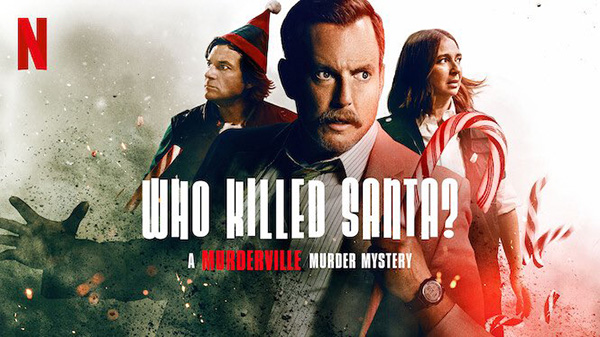
If you have Netflix, I would guess you are occasionally disappointed, even frustrated, by their original fare. But when they get it right, they get it right. And their Who Killed Santa? A Murderville Murder Mystery is hilariously wonderful. You should probably watch the six episodes of the Murderville series on Netflix first; but it should work on you even without that.
The premise is that a famous actor or sports star portrays the partner of Terry Seattle, a homicide cop played by Will Arnett. The mysteries are actually clever and can be solved if you pay attention, which the guest stars sometimes don’t. You see, they have not seen the script, which makes them the butt of the jokes cascading through each episode – at least when Arnett isn’t taking the comic heat himself.
It’s based on a wonderful British series, Murder in Successville, which ran for three seasons. The celebrities on Successville are not always recognizable to an American audience, but it works just the same. You can find those original episodes on You Tube. (I wrote a little bit about Murderville before, back in February of this fading year.)
Matt Clemens and I did a joint interview on a podcast hosted by the talented and gracious Terrence McCauley that you may find of interest. Matt was excellent. I will tell you frankly that I sucked. I talked too much, I didn’t wait for the questions, I was searching for words, and my only excuse was the podcast hadn’t got on my calendar and I was caught flatfooted by it. But Matt is good.
Here’s a nice essay on the film version of Road to Perdition.
This essay looks at the tropes that can be found – or in some cases were generated by – Mickey Spillane’s Mike Hammer. I am mentioned.
This years-late review of my Dick Tracy: The Secret Files anthology is well done, if a tad late in the game.
The article calls Road to Perdition one of the best crime comics of all time. You bet! But, uh…where’s Ms. Tree?
M.A.C.
